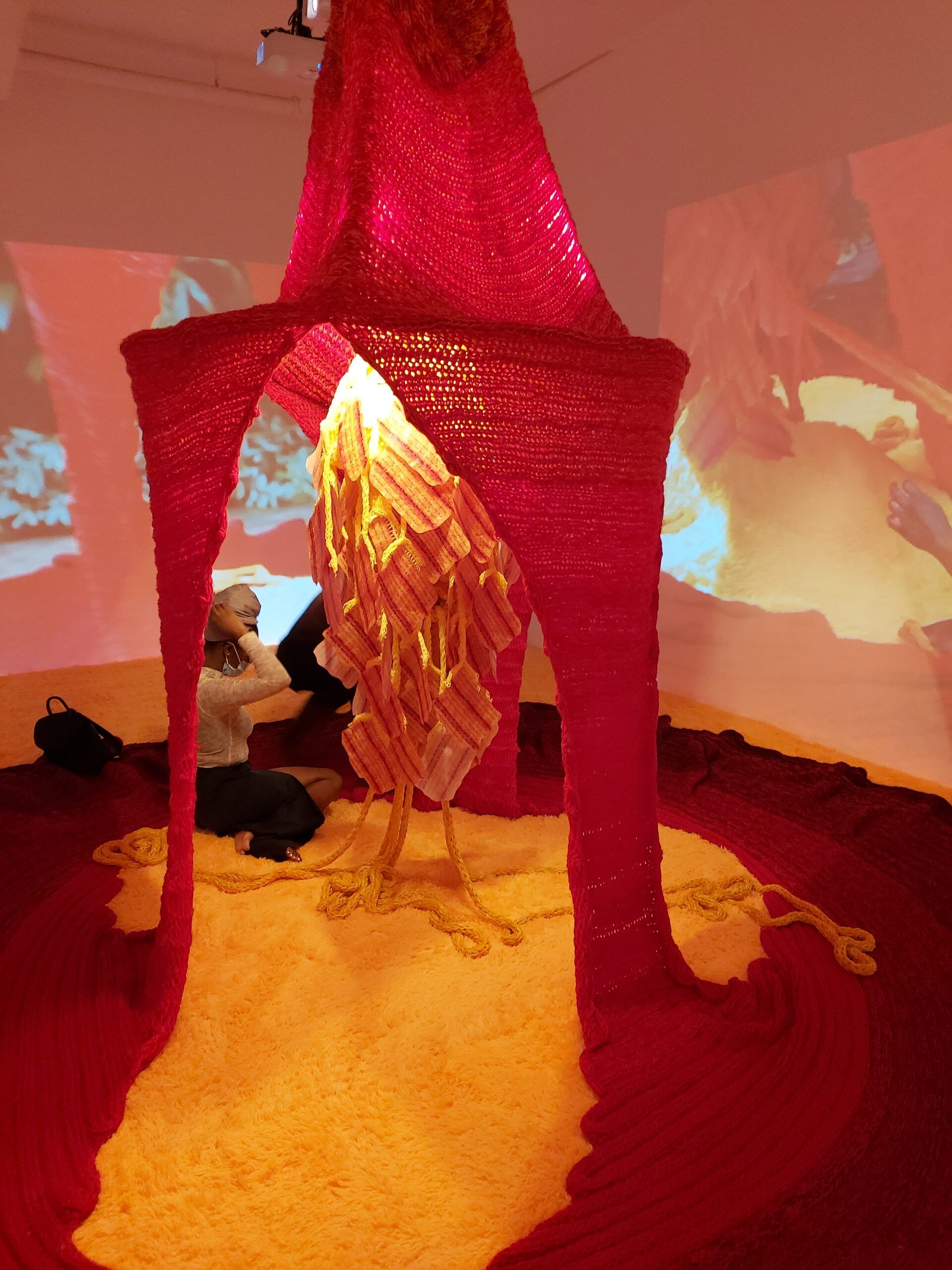The art year in review: The National Gallery of Jamaica- Part 2

National Gallery West (NGW), Montego Bay branch the National Gallery of Jamaica (NGJ), was equally lethargic with its programming as its Kingston headquarters. The Surrealism Black exhibition, which opened in 2021, continued until late in the year, when it was quietly replaced by Re-Imagination: the Works of Albert Artwell, which was curated by NGJ Chief Curator O’Neil Lawrence. A note that the exhibition was now open for viewing, appeared on social media on 10 November 2022, although the exhibition had already been on view for a few weeks. As with the previous exhibition at NGW, no opening reception has been held, nor has a catalogue as yet been published (one was published for Surrealism Black and I have been told one is in planning for the Artwell exhibition). I have not yet seen the Artwell exhibition, but from what I have heard, and despite the catchy title, it is hardly the sort of probing, well-researched exhibition that a major and unique artistic and cultural voice such as the late Albert Artwell warrants. Hopefully, a full retrospective is being planned.
Where NGW has been far more consistently active is with its social media posts which, with few interruptions, included a weekly children’s art video that introduces small projects children can do at home, and Throwback Thursdays #TBT posts. Inevitably, most of the #TBT images come from times when NGW was more active, in an unintended acknowledgement that things are not so well in the present.
There has been no announcement on any new forthcoming exhibition at the NGJ in Kingston since the Kingston Biennial closed on December 31, but we can expect another iteration of the Summer Exhibition, which was supposed to alternate with the Biennial. Hopefully, the curatorial approach for that Summer Exhibition will be revised, as the listless, dramatically uneven inaugural 2019 edition was hardly the shot in the arm that the Jamaican art world needs. Unless there will be another, as yet undisclosed exhibition in the interim, it, indeed, appears that the NGJ has settled for one exhibition per year with much longer runs, down from an average of four to five exhibitions per year at each location in the past. This severely limits the range of exhibitions the NGJ is able to present, and it does not seem to lead to more in-depth curatorship or scholarship or, simply put, better exhibitions and programmes. It is obvious that the NGJ and its Montego Bay branch are not operating to their already well-established capacity, let alone, pushing the envelope further.

In September, there was a notice that the NGJ would be closed during its normal public opening hours, on the afternoon of 8 September, which is as such a very unusual thing to do. It turned out that this was for an official tour of the Biennial by the Prime Minister and select invitees, followed by, as the NGJ’s photo-report of the event cryptically put it, “presentations from the Onyx Foundation”. The Onyx Foundation represents the NGJ’s late Chief Curator David Boxer’s estate and according to media reports, more than 30 works from Boxer’s storied art collection were part of this presentation and would be placed on view at the new Parliament Building. No details were provided of which art works and artists were presented. It is not clear whether this presentation constituted a donation or a loan to the national collection, or why these works, which presumably include masterworks of Jamaican art that ought to be available to the public, are to be placed at the Parliament rather than the NGJ itself. Greater public clarity is needed on this point, and on the relationship between the Onyx Foundation and the NGJ and its board.
It would be interesting to hear how the NGJ Board and the Ministry of Culture view the NGJ’s performance in recent years, and particularly in the last year, as they are jointly accountable for this performance. The current board was appointed, with much fanfare and rather strident rhetoric, after the 2016 elections and quietly reappointed, with just a few changes, in 2019. After two consecutive terms, and with the appointment of a new board supposedly pending, it ought to be time to evaluate whether the NGJ Board’s performance measures up to the initial bravado. This is a matter of public interest. A board re-appointment is, after all, a vote of confidence on the part of the portfolio minister and Cabinet and sends clear signals to that effect to the public and the artistic community. While the disruptions caused by the pandemic ought to be taken into account, it is simply an understatement to say that the NGJ is not what it used to be and has not progressed into any promising new directions.
Questions of governance also arise, especially since the President of the Senate, Tom Tavares-Finson, a senior politician in the current administration, has been the NGJ’s Chair since 2016. The government’s new Policy Guidelines for the Nomination, Selection and Appointment of the Boards of Public Bodies (2018) specify that “members of the Houses of Parliament and Parish Councillors” are ineligible for public board appointments and rightly notes that doing so, while a longstanding practice by both political parties, constitutes a conflict of interest (see page 11). While the implementation status of these much-needed new policies, which among other things seek to reduce the impact of partisan politics on public boards, is as yet unclear, the document is a creature of the current administration, and one would expect for its provisions to be followed in its new public board appointments, based on the principle of “practicing what you preach”. It is also unclear what the role of the current board has been in the NGJ’s management, as it appears that there has been significant politicking and board micromanagement of curatorial affairs, and not for the better. It will be interesting to see what happens when a new NGJ Board and Chair are appointed, as the current Board’s term would have expired last year, and one can only hope that there will not be another under-the-radar reappointment and that the governance issues will be addressed.
I can only hope that 2023 will bring better news and renewed institutional energy and direction for the NGJ. The Jamaican art world needs and deserves no less.
Honouring Vera Hyatt
The Jamaican art historian and museologist Vera Hyatt, who passed away in June, had headed the NGJ in its first year, until David Boxer joined the staff as director/curator in late 1975. She then served as deputy director until 1980, when she migrated to the USA and became a registrar with the Smithsonian Institution. One of her projects there was the Jamaican Art 1922-1982 touring exhibition, which she co-curated with Boxer and which was toured by the Smithsonian Institution Traveling Exhibition Service to major museum venues in the USA, Canada and Haiti before returning to Jamaica in 1986. The exhibition represented a major articulation of Jamaican art history which remains influential today. Dr Hyatt also advised the Jamaican Government on museum development in the 1990s. Her contributions to the Jamaican cultural sector and beyond really warrant their own column (which I hope to be able to present in the near future).
Unless I missed something, Vera Hyatt’s passing, and foundational contributions has not been publicly acknowledged by the NGJ. The institution certainly needs to pay more attention to its institutional history and honour all those who have contributed substantially to its development.
Dr Veerle Poupeye is an art historian specialized in art from the Caribbean. She works as an independent curator, writer, researcher, and cultural consultant. The second, revised and expanded edition of her best-known book “Caribbean Art” was recently published in the World of Art series of Thames and Hudson. Her personal blog can be found at veerlepoupeye.com.






